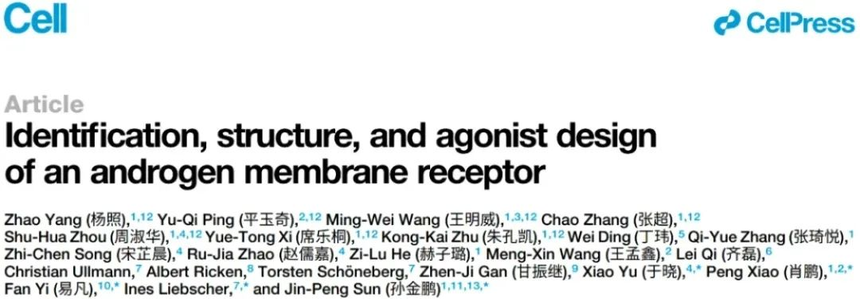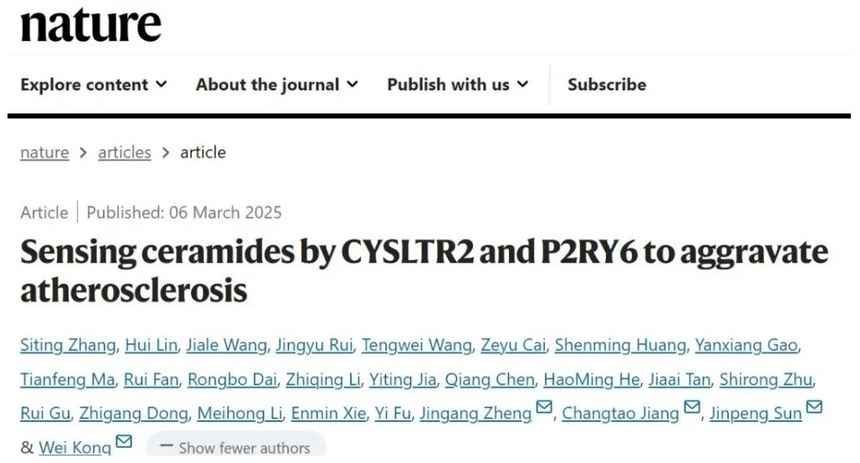Please click the button below to go to our email login page
|
A Role Model for Us All! Professor Jinpeng Sun Completes the CNS Collection in Just Two and a Half Months!In 2025, a dazzling star has rose in the scientific community. Professor Jinpeng Sun from the School of Basic Medical Sciences at Shandong University and Peking University has set off a wave in the academic field. As the corresponding author, he published four groundbreaking research papers in the three top international academic journals, Cell, Nature, and Science, in less than three months, achieving the remarkable feat of a CNS Grand Slam.
On Jan. 2nd, in collaboration with Professor Fan Yi’s team from Shandong University and Professor Cheng Deng’s team from Sichuan University, Jinpeng Sun published a research paper on the evolutionary study of GPR4 proton sensing in the journal Cell. The study elucidates the common mechanisms of GPR4 proton sensing across different species as well as the unique mechanisms specific to each species, from the perspectives of evolution, function, and structure.
On Jan. 29th, Professor Jinpeng Sun’s team made achievements again by publishing another research paper regarding androgen membrane receptors in the journal Cell. They identified the membrane receptor GPR133/ADGRD1 of the androgen 5α-DHT through screening and characterization, revealed its regulatory role and molecular mechanisms in skeletal muscle, and developed small molecule ligands for specific GPR133, providing a new insight for the development of androgen replacement drugs.
In March, Professor Jinpeng Sun’s scientific research achievements emerged in an explosive manner. On March 7th, he collaborated with Professor Wei Kong’s team from Peking University School of Basic Medicine to publish a research paper on ceramide perception in the journal Nature. This study identified the endogenous receptors CYSLTR2 and P2RY6 of ceramide for the first time, and comprehensively revealed the molecular mechanism of ceramide aggravating atherosclerosis and chronic kidney disease related atherosclerosis by activating receptors and inflammasomes. This discovery provides an entirely new “solution approach” to the medical challenge of lipid residual risk. Targeting ceramide receptors is highly likely to become a crucial breakthrough in future anti-atherosclerosis therapies, bringing the possibility of significant transformation to the field of cardiovascular disease treatment.
Just one week later, on March 14th, Professor Jinpeng Sun once again teamed up with Professor Changtao Jiang and Professor Wei Kong’s team from Peking University School of Basic Medicine, and Professor Xiao Yu’s team from Shandong University to publish a research paper on ceramide metabolism signals in the journal Science. This study first discovered the ceramide membrane receptor FPR2 in adipocytes, systematically elucidating the mechanism by which the ceramide-FPR2 signaling axis regulates fat thermogenesis and revealing the molecular mechanism via which FPR2 specifically recognizes ceramides. This groundbreaking work not only offers a completely new perspective for a deeper understanding of the biological functions of ceramides, but also opens up a new research direction for targeted treatment of metabolic diseases.
Professor Jinpeng Sun’s achievement of publishing in the CNS in just two and a half months has not only set a new benchmark for the domestic scientific research community, but also provided valuable experience and inspiration for researchers worldwide.
In his multiple studies, we can see that he actively collaborates closely with top research institutions internationally and domestically, such as Peking University, Leipzig University in Germany, and Sichuan University. This interdisciplinary and cross institutional cooperation model not only gathers and integrates the scientific research forces and advantageous resources of all parties, but also promotes mutual communication and collision among researchers with different research backgrounds and ways of thinking, providing a more comprehensive and diverse perspective for solving complex scientific problems. We look forward to him achieving more breakthrough results in his future research and contributing more Chinese wisdom to the global scientific community. |




